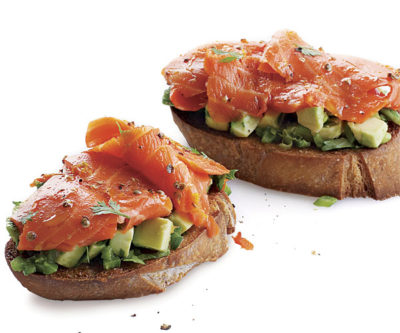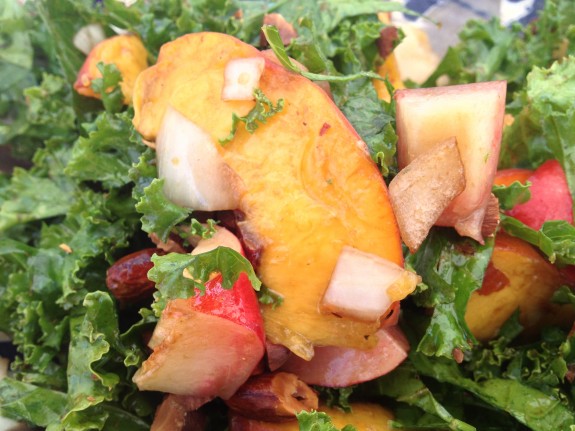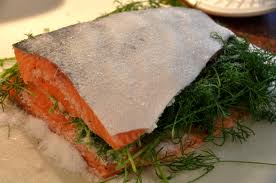Six Slimming Strategies for Your Summer Vacation
- At July 30, 2013
- By Katherine
- In Articles, News
 0
0

Katherine Tallmadge Kayaking on the Miles River during a recent vacation with a hand-carved Greenland paddle by Bob Baugh
A new client came in feeling desperate: She gained 10 pounds on her summer vacation. I’ve heard this sad story before; but it doesn’t have to end this way! In fact, just the opposite…
Cruise Control
Two of my clients recently reported shock at losing weight on their Mediterranean cruise vacations. Lorraine, a 53-year-old public health specialist in Washington, D.C., came home from a cruise and was surprised to find she had lost two pounds. Rick, a professor of psychiatry and behavioral sciences in D.C., lost six pounds during his 10-day cruise.
Both remarked that they had indulged in ice cream, desserts, pasta, bread, and other foods that they didn’t usually eat. Yet, they dropped weight on vacation, despite struggling to lose pounds at home. As soon as they returned, the pounds began piling on, and they came to me desperate to return to the seemingly magical weight-loss mode they had fallen into during vacation.
I agreed that it was confusing. Both claimed they weren’t trying to diet and had eaten without restriction. Lorraine didn’t exercise any more than usual and had proof: Her pedometer, which measures her daily steps, showed the same readings she recorded at home. Rick may have walked more than usual—he didn’t wear his pedometer—but that alone doesn’t explain a six-pound loss, especially given his decadent eating.
Most of us are accustomed to accidentally gaining weight on cruises, not losing it. Tasty, fattening food is available all day long. During every meal, you’ll have a few hors d’oeuvres, then an entree, and who can resist dessert? Even midnight buffets. It’s not uncommon to gain even a pound a day while on a cruise or vacation.
So, how did these cruises turn into weight-loss adventures? And how can you replicate the conditions that worked for my clients—without getting seasick in the process?
As Lorraine and Rick described their experiences, some patterns quickly emerged:
- They ate whatever they wanted, from desserts to bread to pasta,
- They didn’t exercise, though they walked a lot during stops in ports (about 12,000 steps a day, according to their pedometers),
- Every meal featured buffets, stocked with a wide array of fruits and vegetables.
My analysis? The variety and volume of fresh, healthy food helped to properly nourish my clients.
Variety: The Most Significant Factor Influencing How Much You Eat!
Studies indicate that variety, more than any other factor, influences how much we eat. The more diverse food options we encounter, the more we eat without even realizing it. The desire for dietary variety is important for health and helped humans to evolve. People who ate lots of different types of food each day were—and still are—more likely to obtain all the essential nutrients. Based on this theory, a buffet would lead to a higher calorie intake and weight gain. But Rick and Lorraine’s cruise buffets had an unusually large and varied number of beautifully prepared fruits and vegetable dishes, from fresh chopped fruit to salads and cold vegetable soups. While exposure to a variety of fattening foods causes weight gain, access to a variety of fruits and veggies promotes weight loss. Though they didn’t consciously realize it at the time, both Rick and Lorraine ate more fruits and veggies before, during, and between meals.
Volume: Feeling Full While Eating Fewer Calories?
Some foods are less energy dense than others—that is, they have fewer calories per gram—so filling your plate with more of those means you’ll be eating fewer calories without actually eating less food. Low density foods, which are low in calories but high-volume, help you feel full and satisfied while dropping pounds. Fruits and veggies are ideal, since they’ll fill you up without breaking your calorie bank; they’re correlated with a lower body weight. Eating high-volume, low-calorie foods affects how satisfied we feel in a number of ways. It causes stomach stretching and slows stomach emptying, stimulating the nerves and hormones that signal feelings of fullness. There’s also a visual component—seeing a large volume of food increases our ability to feel satisfied by it. Studies also suggest that when we eat large meals that last a long time, our satisfaction declines and we lose interest in finishing them.
Why They Ate Whatever They Wanted – And Lost Weight
Still wondering how Rick and Lorraine ate whatever they wanted, including desserts, and managed to lose weight? My analysis is that the fruits and veggies were so plentiful and took up so much room in their stomachs, they both ate less of everything else. Plus, they felt that they had eaten to their hearts’ content.
You too can get on “cruise control” at home and enjoy eating the right number of calories, feeling satisfied and even losing weight without trying. Rick and Lorraine’s cruise experiences are perfect examples of how this can happen. To replicate their results, consider having a buffet of fruit and veggie dishes in your home and office—morning, noon, and night. Pre-prepare a large variety of these, so they’re easily accessible and grab-able. And since exercise counts too, put on a pedometer and aim for the recommended 10,000 steps a day. (About 2,000 steps is one mile. The average office worker gets about 4,000 steps daily.)
Dishes you may find on your Mediterranean Cruise (all found in Diet Simple Farm to Table Recipes):
Melon Chunks with Crumbled Feta and Fresh Mint
Nora’s Watermelon Gazpacho
Fresh Summer Salsa with Watermelon
Six Strategies
(excerpted from “The Map for Frequent Travelers” in my book, Diet Simple)
• Ask yourself what’s most important to you about the vacation. Is it looking and feeling your best? Feeling energetic? Wearing your most beautiful, form-fitting outfits and bathing suits? Visiting with loved ones? Or is it eating every tempting food in sight?
• Always eat at regularly scheduled intervals. Have a large breakfast and stop for a healthy lunch. Don’t starve yourself during the day so that you irrationally overeat everything in sight whenever you’re around food.
• Set dining priorities. Suppose, for example, you’ve booked four dinners out. You will gain weight if you eat with abandon each time (plan on 1 pound per day). Decide in advance that one of those nights is going to be your “splurge night.” Order anything you want. Enjoy every bite. Savor each and every one of those calories. On the other three nights, order more carefully. You’ll still enjoy the experience of dining out, but you won’t take in more calories than your body can handle.
• Do your homework. Before you go to a restaurant, check out its website and menu. Take note of the courses that look tasty yet healthy. That way, you won’t be as tempted by the sights and smells of fattening options once you get there. Of course, as in any restaurant, the no-brainer healthy selection is a salad-like appetizer, a simple seafood preparation, such as grilled fish, fruit for dessert, and by all means…a glass of wine.
• Stay active. Don’t waste time in a gym: Sightsee! Many of my clients get unbelievable amounts of walking during sightseeing vacations: 20,000 to 25,000 steps per day isn’t unusual (roughly 2,000 steps make up a mile, and the standard steps-per-day goal is 10,000). That’s why you often don’t gain weight on trips to Paris or Rome even when you eat in fabulous restaurants every night. (Without the walking you would, though!) Bring a pedometer to track your steps. If you’re at the beach, swim—or walk along the ocean between chapters of your trashy romance novel.
• Bring a picnic. This is a no-brainer when staying with friends—it’s simply a polite and generous thing to do—or in a rental with a kitchen.
Farmers Market Recipe: Fresh Kale & Summer Peach Salad with Toasted Almonds & Balsamic Vinaigrette
- At July 19, 2013
- By Katherine
- In News, Recipes
 0
0
“I don’t normally like kale, but this salad is delicious!” is a comment I hear over and over when I serve this dish. Last year around this time, I was volunteering at an Anacostia Farmers Market. At the time, there was only one produce farmer at the market and all he had the day I was coming was peaches, kale and potatoes! My job at the Farmers Markets is to inspire people to buy the locally grown produce available that day, but what the heck was I going to do with kale, peaches and potatoes? I was stumped! Then I leafed through my own book, Diet Simple: 195 Mental Tricks, Substitutions, Habits & Inspirations, and got inspired by one of Chef Carla Hall’s contributions to my book, her “Hearty Greens Salad with Warm Balsamic Cherry Vinaigrette.” Aha! I can do a variation on the theme, I thought, use peaches, add some crunch with toasted almonds and VOILA! It was a HUGE HIT at the Anacostia Farmers Market. So I’ve included this wonderful recipe in my new book: Diet Simple Farm to Table Recipes (Bookbaby 2013)
Today is the 5th “Katherine’s Market Recipe” of 2013, all of which are designed to be delicious, easy, quick, famiy-friendly, nutritious (heart-healthy & diabetes-friendly), and to highlight produce found at our local farmers markets this week. At your farmers market, you’ll find produce picked at peak ripeness, which means maximum flavor, texture, and nutrition. You’re also helping save the environment when you buy at your farmers market. Here’s how…
Serves 6
Vinaigrette:
3 Tablespoons Extra Virgin Olive Oil
1 Tablespoon Balsamic Vinegar
Salt and Pepper to taste
Salad Ingredients:
6 Handfuls of fresh Kale (or other greens), washed, tough stems removed, and torn into bite-sized pieces
2 Cups Fresh Sliced Summer Peaches and/or any seasonal Berries
2 Ounces toasted slivered Almonds
½ Sweet Onion, peeled and sliced
In a large bowl, add the olive oil, vinegar, salt and pepper. Whisk together. Add the kale, onion, almonds, and peaches and toss together. Serve immediately.
CNN Report Follow-up: Katherine Explains GMOs
- At July 08, 2013
- By Katherine
- In Articles, News
 2
2
Genetically Modified Foods: Part II
Your responses to my recent CNN interview were PASSIONATE – on both sides of the issue – regarding GMO’s health and environmental benefits.
Genetically modified organisms (GMOs) continue to spark passionate debate: Emotions run high regarding studies of the impacts of GMOs on health and the environment.
I was interviewed about GMOs by CNN’s “The Situation Room with Wolf Blitzer” which recently reported that Chipotle and many restaurants and food companies in the United States use GMOs. Though Chipotle is one of the few that voluntarily discloses its ingredients.
It’s important to note that scientists in general regard a GMO food nutritionally equivalent to a non-GMO food.
The U.S. government’s stance
GMOs are not allowed in any food certified as organic by the U.S. Department of Agriculture (USDA). However, in an online food Q&A, the U.S. Food and Drug Administration (FDA) stated that GMOs have been in the U.S. food supply for about 20 years. The agency also stated in a consumer update that “Foods from genetically engineered plants must meet the same requirements, including safety requirements, as foods from traditionally bred plants.” Such foods, the FDA added, “are generally as nutritious as foods from comparable traditionally bred plants… [They] have not been more likely to cause an allergic or toxic reaction than foods from traditionally bred plants.”
Additionally, Michael Jacobson, executive director of the Center for Science in the Public Interest, said there is no safety hazard in using genetically modified soybean oil over conventional soybean oil — a finding the respected organization highlighted recently in its Nutrition Action newsletter.
Hence, the federal government does not require that GMO or non-GMO foods be labeled.
“Food manufacturers may indicate, through voluntary labeling, whether foods have or have not been developed through genetic engineering, provided that such labeling is truthful and not misleading,” the agency stated. “FDA supports voluntary labeling that provides consumers with this information.”
Yes, the GMO debate is still heated and in full swing. There are pros to GM foods —increased yield in staple crops can help to combat world hunger, for example. (Viggy Parr contributed to this report)
Are Genetically Modified Foods Safe?
- At June 19, 2013
- By Katherine
- In Articles, News
 0
0
CNN’s “Situation Room with Wolf Blitzer” reported… that Chipotle Fast Food Restaurants have disclosed (good for them!) they are using some genetically modified foods
Katherine was interviewed recently for the report.
Genetically Modified Organisms: The GMO – in this case a food’s – genetic material has been altered, much like plant breeding, which has been going on for thousands of years. Nutrition and food scientists agree that a GMO food is safe and nutritionally equivalent to a non-GMO food. In fact, some foods have been altered to improve nutrition for undernourished people with great success. An example is Harvest Plus, an organization that has developed iron, zinc and vitamin A fortified seeds for farmers in underdeveloped countries like India.
Sustainable Farming: Farming which has a future, where soil, water, and the environment are protected for future generations.
Local/Seasonal: The movement which promotes eating foods grown locally and in season; when food is picked at peak ripeness for maximum nutrition, flavor, environmental protection, and sustainability. For CNN’s report (and Katherine’s article) on Farmers Markets and how they save your health and the environment…
Omega-6-Fatty Acids, high in soybean oil, compete with Omega-3-Fatty Acids in your body. If omega-6-fatty acid intake is too high in comparison to omega-3’s, this leads to increases in inflammation, a leading risk factor for many diseases including heart disease, cancer, etc. For details…
On CNN: An Egg-A-Day Does Not Increase Heart Disease or High Blood Pressure Risk (Breakthrough Study)
- At February 01, 2013
- By Katherine
- In Articles, News
 0
0
My clients regularly ask me, “Should I be eating eggs? My doctor tells me they’re ‘poison,’ and to avoid eggs because they’ll increase my cholesterol.”
My response? “That’s OLD NEWS!” Read the updated scientific reports on eggs and find out why…
Most of the studies I’ve seen conclude that eggs are fine, I’ve reported in “7 Bad Foods That Are Good for You” in The Washington Post & “Eggs Don’t Deserve Their Bad Reputation, Studies Show” in LiveScience.com’s Expert Voices Op-Ed — and may even improve your health, as they contain nutrients difficult to find in other foods (see below). More importantly, a report by Ying Rong of Huazhong University of Science and Technology and her colleagues published in the British Journal of Medicine in January, reviewed 17 different egg studies.
The study concluded, “Higher consumption of eggs (up to one egg per day) is not associated with increased risk of coronary heart disease or stroke. The increased risk of coronary heart disease among diabetic patients and reduced risk of hemorrhagic stroke associated with higher egg consumption in subgroup analyses warrant further studies.”
The bottom line: Your nutritional needs and food choices should be personalized. You should enjoy food and eating, as it is one of the basic pleasures in life!
The much-maligned egg deserves more respect
My grandmother’s favorite food in the whole wide world was eggs (see recipe below). She loved eggs so much, we named an egg cooking style after her. The “grandmommy egg” was soft-boiled for three minutes. As it sat in an egg cup, we would slice off the top third so the runny yolk would form a delicious and naturally creamy sauce for the white.
Unfortunately, during the last decades of her life, my grandmother came to see eggs as poison and avoided one of her real food pleasures. Health authorities were warning the public against eating eggs for fear that they were a major cause of high cholesterol levels — the bad kind, low-density lipoprotein, known as LDL — and increased risk of heart disease.
New studies show that the caution may have been an exaggeration.
Yes, increased blood cholesterol levels can raise the risk of heart disease. Eggs are high in dietary cholesterol. But does eating eggs raise blood cholesterol and cause heart disease? This is where the story gets somewhat complicated, so stay with me, folks, and I’ll try to make sense of all of this.
First, the research
Most epidemiological research — the kind of research that studies large populations over time and analyzes their diets and their health — has found no connection between eating eggs and increases in heart disease. On the other hand, controlled clinical studies — where researchers feed subjects specific amounts of cholesterol and measure the effect on blood — do show a slight increase in blood cholesterol with increases in dietary cholesterol, though how much depends on genetic factors.
Cholesterol is an important component of all human and animal cells and influences hormone biology, among other functions. Since your body naturally has all it needs from producing its own cholesterol, there is no dietary requirement for more cholesterol. But the American diet contains plenty, since we eat a lot of animal products. All animal products contain some cholesterol, but they also contain saturated fat, an even more significant culprit in heart-disease risk.
“The major determinant of plasma LDL level is saturated fat,“said Alice Lichtenstein, professor of nutrition science and policy at the Friedman School of Nutrition Science and Policy at Tufts University.
And while eggs are high in cholesterol (186 milligrams, 184 of them in the yolk), they’re relatively low in saturated fat (1.6 grams in the yolk).
“In most people, for every 100 milligrams reduction in dietary cholesterol, one would predict a reduction in LDL levels of 2.2 points on average,“said Wanda Howell, professor of nutritional sciences at the University of Arizona.
In fact, during my 20 years of counseling people with high cholesterol, just reducing their saturated fat intake to a range of 4 percent to 7 percent of their calories, causes their blood cholesterol levels to plummet (I usually recommend 4% if you need a dramatic reduction in LDL cholesterol) — a double benefit.
Interestingly, people in Japan — consumers of some of the largest quantities of eggs in the world (averaging 328 eggs consumed per person per year — have low levels of cholesterol and heart disease compared with other developed countries, especially the United States. Why? In part, it‘s because the Japanese eat a diet low in saturated fat.
Americans do just the opposite. Research has shown that we usually have our eggs alongside foods high in saturated fat, such as bacon, sausage and buttered toast. This meal pattern raises LDL levels and makes the effect of eating eggs worse than it actually is.
So how many eggs can you eat? That depends on a number of factors. The American Heart Association no longer includes limits on the number of egg yolks you can eat, but it recommends that you limit your cholesterol intake to 300 milligrams daily, or 200 milligrams if you have heart disease or if your LDL is greater than 100. You decide where that cholesterol comes from!
Other experts go further and say an egg a day is fine.
“The amount that one egg a day raises cholesterol in the blood is extremely small, so small in fact that the increase in risk in heart disease related to this change in serum cholesterol could never be detected in any kind of study,“ said Walter Willett, professor of epidemiology and nutrition at Harvard’s School of Public Health.“Elevations in LDL of this small magnitude could easily be countered by other healthy aspects of eggs.“
Based on the research, my recommendation is if you eat a healthful diet, go ahead and eat an egg a day, says Katherine on CNN. On the other hand, if your cholesterol is high and if you eat the typical American diet — high in saturated fat, devoid of fruits, vegetables and fiber — maybe you shouldn’t be eating an egg a day.
But will taking eggs out of an unhealthy diet make a positive difference? Probably not. I can‘t tell you how many times during my career I‘ve heard people say, “I‘ve cut out eggs, but my cholesterol is still high!“The impact of a healthy, balanced diet cannot be denied here.
Good for you
Assuming you’re eating a healthy diet, here are some ways you may benefit by eating eggs.
Protein. Eggs are considered the gold standard that other proteins are measured against. Because of the superior amino acid mix, an egg’s six grams of protein are absorbed easily and efficiently used by the body. The egg is also low-calorie (74 calories).
Choline. Yolks are one of the best sources of this essential nutrient. Choline is needed for brain development in a growing fetus and may also be important for brain function in adults.
Lutein and Zeaxanthin. These two, important, beneficial phytochemicals found in egg yolks (as well as kale and spinach) help prevent eye diseases, especially cataracts and age-related macular degeneration. While eggs contain less lutein and zeaxanthin than greens, these phytochemicals are more absorbable because of the presence of fat in the yolk.
Vitamin D. Eggs are one of the few natural sources of Vitamin D, important for the bones and teeth. Vitamin D aids the absorption of calcium, which is important for the heart and colon, as well.
To bring this all together, here is a recipe that is a regular meal for me any time of the day — quick, easy, delicious, nutritious!
Eggs Scrambled with Onion, Garlic and Sweet Cherry Tomatoes
Servings: 1
Sauté 1/4 sweet onion and a smashed garlic clove over medium-high heat in 1 teaspoon canola or olive oil until almost soft. Add a handful of chopped tomatoes to the pan (or any other vegetables you happen to have, such as chopped spinach, kale, mushrooms or peppers) and cook for another 5 minutes. Turn down the heat to very low. In a separate bowl, whisk two eggs. Pour eggs into the pan containing the onion, garlic and tomato — add 1 ounce low-fat cheese, if you wish. Stir continuously until eggs are cooked. Pour over toasted, whole rye bread.
The Study: British Medical Journal 2013; 346 doi: http://dx.doi.org/10.1136/bmj.e8539 (Published 7 January 2013)
Study Conclusions: “Higher consumption of eggs (up to one egg per day) is not associated with increased risk of coronary heart disease or stroke. The increased risk of coronary heart disease among diabetic patients and reduced risk of hemorrhagic stroke associated with higher egg consumption in subgroup analyses warrant further studies.”
Bottom Line: “Your nutritional needs and food choices should be personalized. You should enjoy food and eating, as it is one of the basic pleasures in life!”
Sieze the New Year!
- At January 05, 2013
- By Katherine
- In Articles, News
 0
0
What are your hopes, dreams and desires for 2013? The new year is a valuable opportunity to improve the quality of your life and happiness. Here’s how to make the best of it…
Now, move mindfully across the threshold into 2012 filled with ideas, possibilities and plans! Analyze people who will continue to be important, ideas to explore, places to spend time, important events and things to carry over from last year to this year.
CREATING A “SENSE OF URGENCY”
An important aspect to making major changes in the world or in your own personal habits is to feel a sense of urgency about your goal. A sense of urgency, according to The Dalai Lama in “The Art of Happiness” – and scholars in this important field of psychological research, can be achieved two ways:
1) Remind yourself of your positive vision for success. For example, visualize yourself at your goal weight, healthy, feeling energetic and confident (see “Dream” in my best-selling book, Diet Simple), and
2) Ponder the negative consequences of not making a particular behavior change (a little fear can be a good thing – but just a little). For instance, in the morning as you’re considering two options: getting out of bed to exercise or sleeping just a little longer. Ask yourself: “Do I want to feel good today? Or do I want to feel crummy today?” Another example, as you’re driving home from work and deciding to grab some carry-out or to go home to eat the healthy meal you’ve already planned. Ask yourself: “Do I want to achieve my weight loss goal (insert positive vision here) or will I accept being the same weight and having the same health problems for another year?” “Do I want to stop taking these darn medications or will I be taking them forever – and even increasing the dosage? What will my doctor say?” “What kind of example am I setting for my children, my spouse? Is this a behavior I can be proud of?” etc. You get the idea…
ACHIEVING INCREASED HAPPINESS
Outlining the consequenses of your actions and acting on your long term goals, as opposed to momentary desires, helps you grow as a person and become a happier person, according to scientific research. It increases your general happiness level because you are making decisions which contribute to your long-term goals.
THE DOWNWARD SPIRAL OF GIVING IN
Usually, when we do something that feels good momentarily, such as giving in and staying in bed for 30 more minutes of sleep in the morning instead of exercising, or grabbing a coffee cake at the coffee shop when we originally just planned on buying coffee, our happiness level may increase (“oooh, this feels yummy!”) – but it’s only a temporary blip of happiness. It goes back to the same level it did before – once the temporary experience wears off – and nothing changes for the better in our lives. We may even become more depressed as we continue to “give-in” to these unfulfilling momentary desires and continue into a downward spiral.
MAKING THE HARDER, BUT MORE SATISFYING CHOICE
If, instead, we say to ourselves, “I’m getting out of bed NOW! I’ll feel terrible if I don’t, and I’ll never achieve my goals,” or “Will stopping to get carry-out change my life for the better? I’d be better off going home and eating something healthy as I want to lose weight, lower my cholesterol, etc,” or “I really don’t need that coffee cake, and I’ll feel terrible after eating it, and will it make me happier at the end of the day?” “Will this increase my happiness for the short term? Or for the long term?” Another more extreme example might be a drug addict relapsing. It feels great momentarily, but the feeling doesn’t last.
When you make a more thoughtful decision, which contributes to your longterm health – physical or psychological – you are more likely to achieve your life’s hopes, dreams and goals, you can actually increase your happiness level, feel happier more often and grow as a person.
WHY IT’S NOT ALWAYS EASY
It is not always easy in our society to make the healthy decision. It’s easier – and the norm, in fact – to be overweight and unhealthy. But, I’m convinced it is possible to be healthy in an unhealthy world with planning, practice, determination, and support (I’m here any time you need me!) – Besides, what’s the alternative?
It takes effort to train your mind to work this way, but this is how we become better people and we advance as a society.
THE RESOLUTION SOLUTION:
HOW TO MAKE YOUR RESOLUTIONS SUCCESSFUL
“Forty to 50 percent of American adults will make New Year’s resolutions for self improvement. Scientific research indicates you are ten times more likely to change by making a New Year’s resolution compared to non-resolvers with the identical goals and comparable motivation to change,” says John C. Norcross, PhD, Professor of Psychology, University of Scranton and coauthor of “Changing for Good.”
Dr. Norcross recommends the following strategies, based on studies tracking successful New Year’s resolvers, and their differences with unsuccessful resolvers:
* Make realistic, attainable goals (See “Tiny Changes, Lasting Results” in Diet Simple’s Introduction),
*Develop a specific action plan (Fill out “Your Personal Goal Worksheet” in Diet Simple),
* Establish genuine confidence that you can keep the resolution despite the occasional slip. Confidence is a potent predictor of who succeeds in the new year! (creating your “sense of urgency” will be useful here – see above)
* Publicly declare your resolution. Public commitments are generally more successful than private decisions,
* Track your progress by recording or charting. Studies show self-monitoring one of the most important behaviors correlated with successful change (see “Write it to Lose It” in Diet Simple),
* Reward your successes (see “Get Sexy Lingerie” or “Kiss Your Spouse” in Diet Simple),
* Arrange your environment to help, rather than hinder, you. Limit exposure to high-risk situations and create reminders for your resolutions (see all of Diet Simple!),
* Expect occasional slips in your resolutions (see “Lighten Up!” in Diet Simple). Studies of successful weight loss maintainers show they experience just as many stressors and slips as weight relapsers; no one’s perfect after all (sorry to disillusion you)! The maintainers pick them self up, dust themselves off, and start all over again!
* Cultivate social support (see all of Diet Simple!). Successful weight loss maintainers are more likely to cultivate support from friends, loved ones, or professionals. It does take a village!
The Battle of the Bulge is Won at the Margins. Sweeping Dietary Overhauls are Impractical and Don’t Work Over Time!
Shrewd, Small, Concrete Changes Which Can be Easily Incorporated into Your Daily Routine Lead to Success!
Music and poetry move me deeply, and in ways I don’t always understand. All we know is after hearing something, we feel so much better. I’ve made some selections that have made a difference for me and hope you enjoy them too.
A Chocolate A Day? Health Benefits of Chocolate De-Mystified
- At February 11, 2012
- By Katherine
- In Articles, News
 6
6
Is it true that a chocolate a day will keep the doctor away? That’s what many chocolate companies would like you to believe in their Valentine’s Day advertisements. While it looks like cocoa has many health benefits, the chocolates you buy from your local stores may impart little of those benefits.
Are you celebrating Valentine’s Day with chocolate? Do you care about chocolate’s health benefits? Tell me about it below in my “Comments” section.
The cacao bean, grown mainly in Latin America, Africa and Asia, is loaded with beneficial compounds. In fact, its early uses, dating back 3,000 years were mainly medicinal. They have ranged from curing fatigue, angina, constipation, dental problems (tartar removal), dysentery, gout, an “overheated” heart, skin eruptions, fevers, and seizures. One doctor in the 1500s found it made people “extraordinarily fat” if used frequently and so it was prescribed for the thin and weak, according to an article in The Journal of Nutrition. It has been highly prized for centuries, which is reflected in its scientific name, Theobroma cacao, meaning “Food of the Gods.”
Eurpoeans discovered cocoa in the 1500s and over the next few centuries, chocolate, which we know and love so well was born. In this century, chocolate (processed cocoa with added fat, milk and sugar) has been enjoyed for its melt-in-your mouth texture and flavor, with its health giving properties largely forgotten by the civilized world, until recently.
In 1997, Harvard professor Norman K. Hollenberg published a landmark epidemiological study focused on cocoa. He found that high blood pressure was a rarity among Panama’s Kuna Indians who also didn’t experience the typical age-related increases. He at first attributed it to genetic protection. But, when the Kunas migrated to Panama City, their blood pressure increased, pointing to an environmental cause. Upon examination, Hollenberg found the Kunas drank large amounts of indigenous, unprocessed cocoa. Subsequent experiments conducted by Hollenberg and others, have found that cocoa, if high in flavanols, the beneficial plant compounds scientists believe impart most of cocoa’s benefits, relaxes the blood vessels, an important protection against hypertension and heart disease.
In the past ten years, cocoa research has intensified, mainly due to the largess of companies like Mars, Inc, most famous for Milky Ways and M&Ms. What’s striking is that candy companies, such as Mars and Nestle’s, have hired respected nutrition scientists and have been largely responsible for the advancement of cocoa research. Mars has collaborated with such institutions as Harvard, the University of California at Davis, and even the United States Department of Agriculture’s Agricultural Research Service. Through their research and others, many interesting discoveries about cocoa’s health benefits have been made.
The flavanols in cocoa help maintain a healthy vascular system, relax blood vessels, they reduce blood clotting – an aspirin-like affect –reduce oxidative damage, and improve blood flow. A study in the American Journal of Clinical Nutrition found cocoa also reduces inflammation. All of which reduces heart disease risk.
There have been some suggestion that flavanols can be used to treat vascular diseases like dementia, pre-eclampsia in pregnant women, and anything related to blood flow. Emerging research is looking into cancer as well.
But what about that chocolate bar in your vending machine? Are there any health benefits there? The answer: probably not much.
Most research about chocolate’s health benefits have used unsweetened cocoa or specially formulated high-flavanol chocolate. Unfortunately, these compounds are rarely in the chocolate we eat in 21st century America. Flavanols impart a bitter taste so they’ve been removed from most popular products to improve their flavor.
Most of the flavanols are in the cocoa beans and the level decreases with each processing step when it goes from the bean, to the cocoa powder and ultimately a finished chocolate product.
Since flavanols and their health benefits are a new discovery, chocolate companies are just beginning to see if there are ways to keep flavanols consistently high, but still have a tasty, popular product.
Katherine’s Chocolate-for-Health Tips
If you’re eating chocolate for health benefits, try my Dark Chocolate-Dipped Fruit recipe, for one, and be very discriminating in your selections.
You’ll get more flavanols, and therefore health benefits, with less processing. The first choice is cocoa, which isn’t Dutch processed – as when cocoa is “Dutch processed with alkali” the flavanols are reduced. Look for chocolate which has the highest percentage of cocoa as possible and to save calories, look for chocolate with lower fat and sugar levels. In general, cocoa is your best first choice. Second choice is a semisweet or bittersweet chocolate with a high cocoa percentage. Some chocolates go as high as 85% cocoa, but legally can be as low as 35%. I recommend no more than an ounce a day, which may be about 110 – 150 calories, depending on the chocolate. Any more than that and you’re probably going to take in too many calories for weight control.
The numbers:
Type of Chocolate Mg Flavonols Calories
1.3 oz Dark Chocolate Bars, Average*: 82 mg 187
1.3 oz Milk Chocolate Bars, Average*: 42 mg 198
1 TBSP Unsweetened Cocoa Powder, Average*: 75 mg 12
*USDA’s Nutrient Data Laboratory
Use this incredible chocolate fondue recipe for berries, sliced pears, bananas, or any favorite fruit!
Katherine’s Hot Cocoa:
1 tsp or 1 Tbsp unsweetened cocoa, to taste
1 tsp or 1 Tbsp honey
1 cup Skim Milk or 1% Milk or Soy Milk
Heat in microwave for 2 – 3 minutes and stir to blend the chocolate.
Using 1 teaspoon of cocoa and sugar, contains approximately 25 mg flavanols and 115 calories (zero saturated fat), depending on the milk used.
Using 1 Tablespoon of cocoa and sugar, contains approximately 75 mg flavanols and 153 calories
Are you interested in chocolate’s health benefits? How much chocolate do you eat? Let me know in my “comments” section below…
Swedish Gravlax & Mustard Sauce
Gravlax is salmon which is cured, smothered in a dry preparation of salt, pepper, sugar and dill, and refrigerated for a few days. A Scandinavian staple since the middle ages, when it was salted and slightly fermented before refrigeration was invented. It is served with Swedish hard or soft 100% coarse rye bread, on salads, with boiled potatoes, and almost always with plenty of dill and mustard sauce.
2-1/2 pounds fresh salmon (about 1 side of a salmon), cut in half
4 Tbsp Sugar
5 Tbsp Coarse Salt
1 Tbsp White Peppercorns, coarsely ground
1 Bunch Fresh Dill
Lemon and additional dill for garnish
Mix sugar, salt and pepper in a bowl. Set aside.
Place the salmon halves, skin side down, flesh side up, into a shallow baking pan or cutting board. Evenly distribute the sugar, salt, and pepper mixture over both pieces. Place all of the dill on the flesh side of one fish half. Place the other half on top of the first half so that the flesh sides are together, and the thick part of the top half lies on top of the thin part of the bottom half (see photo). Place in the shallow baking pan, and cover with plastic wrap, or into a large plastic bag. Keep in refrigerator for two to three days (at least 24 hours),while flipping every 12 or 24 hours.
To serve, scrape off the marinade, slice fish thinly and roll. Garnish with lemon pieces and dill. Serve with mustard sauce on the side. Serves 8 to 12.
Salmon, high in omega-3-fatty acids, is good for you!
Swedish Mustard Sauce
1-1/2 Tbsp Chopped Fresh Dill
3 Tbsp Gulden’s Mustard
1 Tbsp Sugar
3 to 4 Tbsp Vegetable Oil
All ingredients should be at room temperature. Place mustard in a small bowl, add sugar. Blend in the oil slowly. Add the dill and mix thoroughly.
Salmon, high in omega-3-fatty acids, is good for you!

Marcus Samuelsson’s Gravlax Club Sandwich
Two Michelin Star – Aquavit Restaurant
excerpted from “Diet Simple: 195 Mental Tricks, Substitution, Habits & Inspirations”
(LifeLine Press)
This modern version of a gravlax presentation was invented by Chef Marcus Samuelsson, who arguably, made Manhattan’s Two Michelin Star Aquavit first soar the heights of popularity in the 1990’s. The Gravlax Club Sandwich combines the velvety textures of guacamole and gravlax, cured salmon (purchase or see recipe above), with crispy iceberg lettuce (or other greens) and chewy whole grain bread, preferably whole rye. If you want to make this sandwich and don’t happen to have gravlax, substitute smoked salmon for similar success.
I’ve used this recipe at parties. Just cut the sandwiches into smaller appetizer size sandwiches, into quarters, and place a tooth pick through all layers for easy grabbing. It’s always a hit.
Makes 5 sandwiches.
2 avocados
Juice from 2 limes
1/2 medium size red onion, finely chopped
1 medium-size ripe tomato, finely chopped
1 jalapeño pepper, cored, seeded and finely chopped
8 sprigs cilantro, finely chopped
Salt and freshly ground black pepper
10 thin slices of 100% whole grain rye bread, or whole wheat if rye is not available
5 thin slices of Gravlax
1 cup shredded iceberg lettuce (or other greens)
1. Mash the avocado with a fork and add the lime juice. Mix the chopped onion, tomato, jalapeño pepper, and cilantro and toss. Season with salt and freshly ground black pepper to taste.
2. Toast the bread slices lightly and let them cool.
3. Place a slice of gravlax on a slice of bread. Spread 1 to 2 tablespoons of the avocado mixture over the gravlax and sprinkle with shredded iceberg lettuce. Cover with a second slice of bread – or leave open-faced as the Swedes would do. Repeat with the remaining bread slices and gravlax.
1 Gravlax Club Sandwich: Calories 300, Total Fat 15g, Saturated Fat 2g, Cholesterol 5mg, Sodium 740mg, Total Carbohydrate 38g, Dietary Fiber 15g, Omega 3 Fatty Acids 0.82 g, Protein 11g
ABC Primetime News Special: Celebrity Weight Loss
- At January 01, 2011
- By Katherine
- In Articles, News
 0
0
Katherine explains on ABC’s Primetime News Special, “Celebrity Weight Loss: What Really Happens” Why… For Your 2011 New Year’s Resolution, do yourself a HUGE favor… Just Say NO…. NO MORE DIETS!
Don’t be a sucker for the endless, unrealistic promises of these SMUT purveyors! Yes, you heard the usually mild-mannered Katherine Tallmadge correctly….
I hate fanatical diet programs! They take the joy out of eating. Heck, they take the joy out of living! And the research is pretty clear by now that too-tough diets simply don’t work for most people. Even if you lose weight initially, you’re going to get bored or frustrated with all the restrictions and gain your weight back. Or maybe the diet is just too darn unhealthy to stay on.
So if you ever see a diet which emphasizes eating a very low carbohydrate diet or even an extremely low fat diet, or if it recommends packaged foods, liquid supplements or diet pills, I recommend you run – quickly! – in the other direction. Because it’s not something which can – or should – be maintained.
- A good diet is one you can follow for life. One which you enjoy. It’s a strategy which makes you feel energetic and comfortable.
- It’s a way of living which science has shown will enhance your health, the quality of your life, and possibly even extend your life.
- A good diet is one which works with your lifestyle, whether you’re a full-time mom, a high powered professional – or a combination thereof!
- Studies verify weight loss maintainers follow diets with flexibility and choice, ones which can fit into their lives.
I’m passionate about helping people solve their weight problems which saps them of health, energy and happiness. Let alone all of the horrible and preventable life-threatening and chronic diseases which inevitably occur, like heart disease, stroke, cancer and diabetes.
Though the problem of overweight and obesity is a large one and seems to be growing (two thirds of all adults and one out of three children), it’s a manageable and solvable problem. One of the reasons people struggle so much with their weight is they make the mistake of believing they need to do something radical to lose weight – like restricting your eating to cabbage soup for every meal, fasting, cutting out all carbohydrates, cutting out all fats, constantly figuring out percentages of this or that nutrient, going on a liquid diet, or taking unsafe diet pills and supplements.
The studies which analyze successful weight loss maintainers versus weight relapsers confirm the radical diets actually backfire. So don’t get seduced by their empty promises. Stop being a sucker! If the diet is too strict, punishing or depriving, it can’t last, and the weight is gained back. If those diets produce anything, it’s eating disorders, feelings of deprivation and depression, and demoralizing yo-yo’ing weight.
Instead, make your 2011 Resolution to start…
- A way of eating you’ll love, and will always satisfy your hunger and cravings,
- A joyful lifestyle you’ll want to keep forever.
Look for a way of eating and living which will give you…
- A greater sense of well-being, less anxiety and depression,
- Increased metabolism, so your body burns fat more quickly and efficiently,
- A heart working more efficiently, decreasing your risk of a heart attack,
- Lower blood pressure, lower cholesterol, lower blood glucose levels,
- A boosted immune system that cuts your risk of cancer, colds, flu and disease, Stronger bones and stronger muscles,
- Improved techniques for coping with daily stresses and strains of your busy life.
As a weight loss counselor, one of the most valuable lessons I’ve learned is that weight loss doesn’t have to be – and can’t be – a depressing, depriving, angst-ridden chore. I’ve witnessed the joy, surprise and relief of clients as they learned that losing weight the “Diet Simple” way is an easy and positive experience.
# 1 THE SUNDAE SOLUTION
- At December 19, 2010
- By Katherine
- In Articles, News
 0
0
NOW it’s official: You can eat a chocolate sundae every day and still lose weight…
One of my clients, Jennie, almost always snacks in the afternoon. She view these snacks as ‘rewards” for getting through another day of drudgery. Of course, these same snacks contribute to her weight problem.
My advice to her (and I’m pretty proud of it ): Have a chocolate sundae every day.
I know this sounds strange, but here’s why it helps. The chocolate syrup that you pour over ice cream isn’t exactly lean, but that’s okay because underneath the chocolate – the sundae part – is fresh fruit instead of ice cream. Fruit is a lot better for you than ice cream, and the chocolate provides a slightly sinful incentive to make the switch seem worthwhile.
Almost any fruit works with chocolate syrup – strawberries, bananas, peaches, take your pick. Apart from the fact that a fruit sundae is deliciously fresh tasting, filling, satisfying, and low in saturated fat and calories, it makes a great substitute for other snacks that really load on the calories.
THE SUNDAE SOLUTION has been responsible for hundreds of people eating – and LOVING – more fruit. If you try it, you will too!
BOTTOM LINE: Lose 9 to 35 pounds
A tablespoon of regular chocolate syrup has about 50 calories. Pour it over fruit, and your total is about 110 to 160 calories. Compare that to the usual snacks – a candy bar or protein bar, for example, has about 250 calories, and an ice cream cone has about 500 – and you can see why substituting the fruit sundae can lead to impressive amounts of weight loss. Make the switch every day, and you can count on losing 9 to 35 pounds in a year.


















